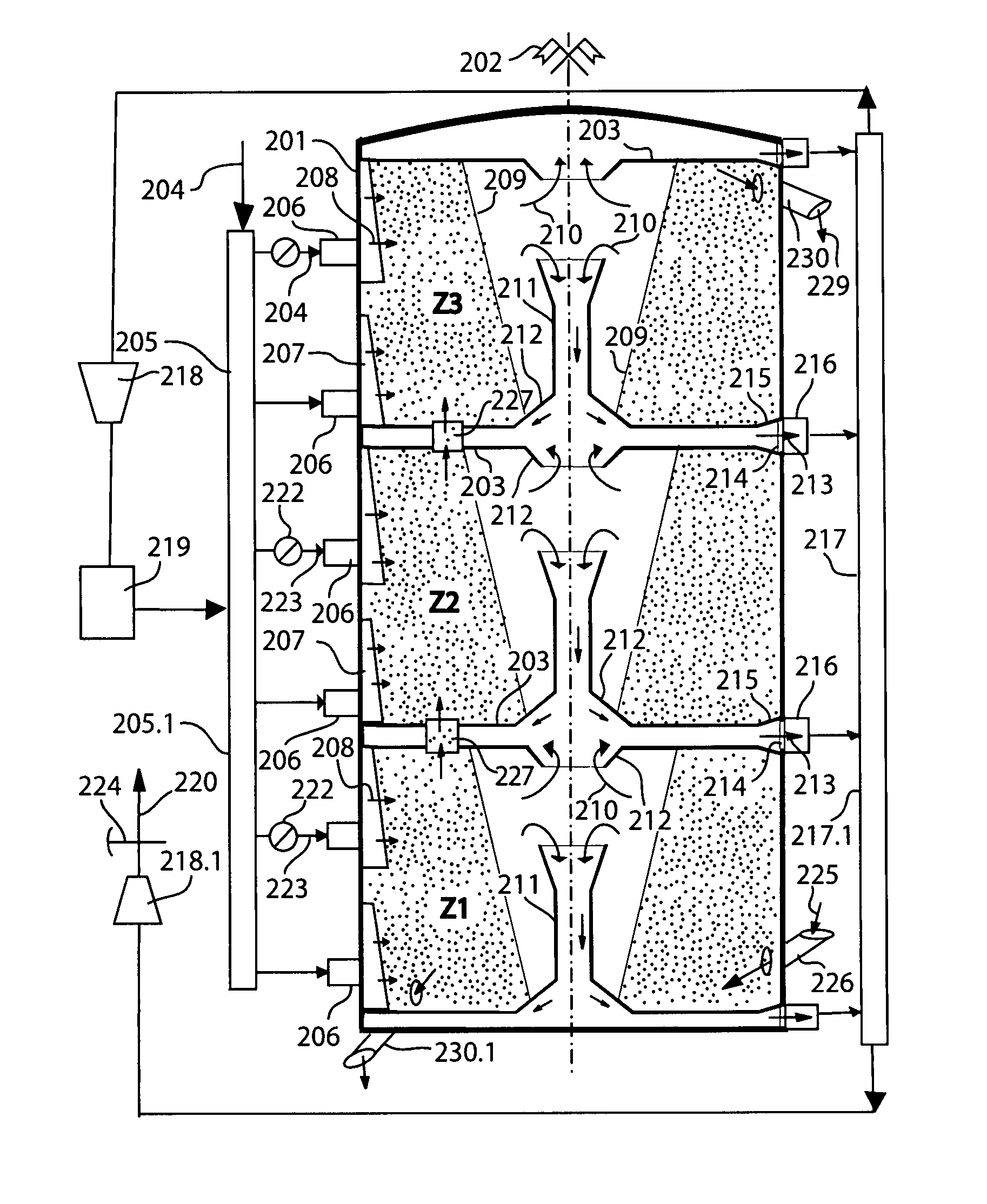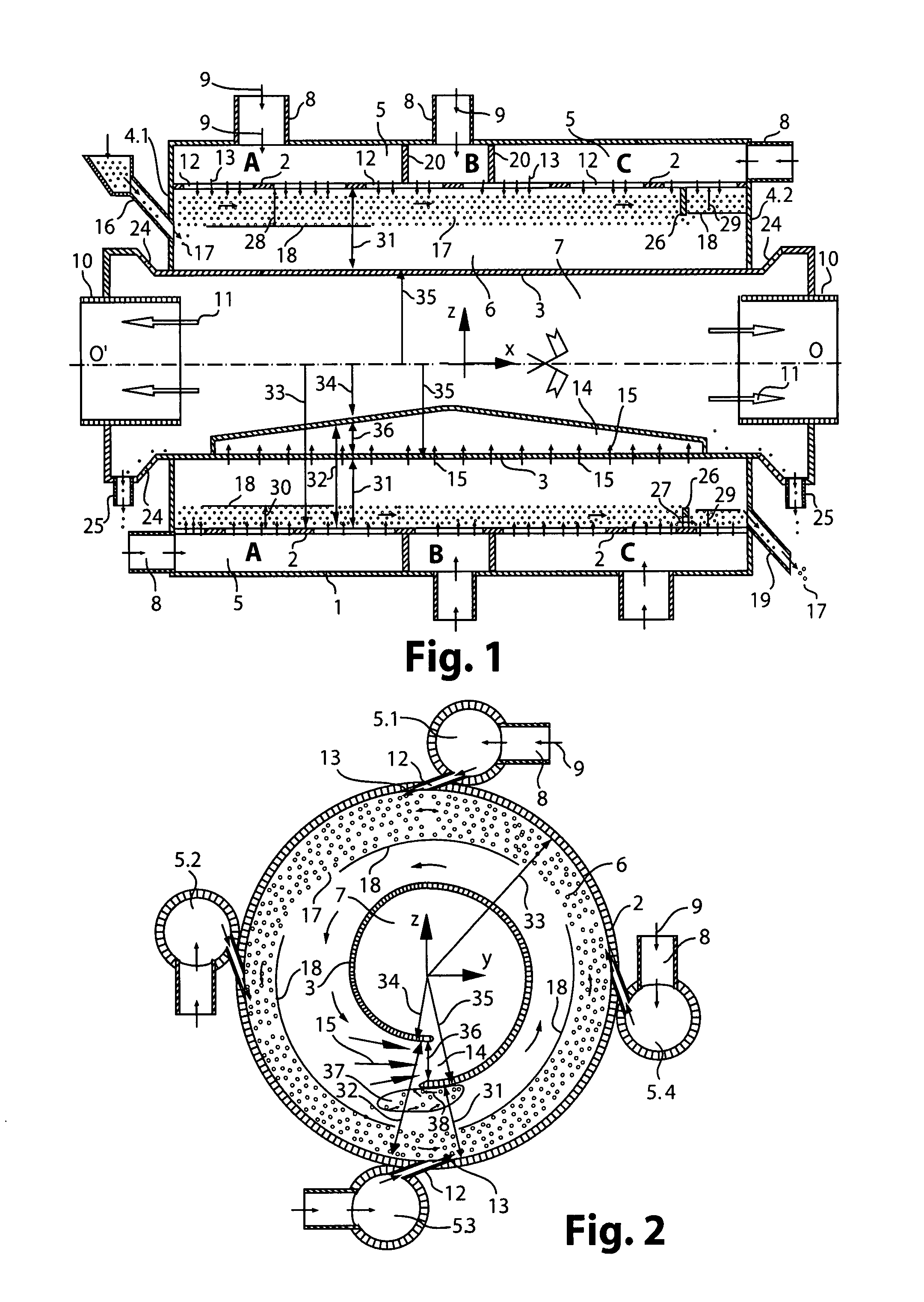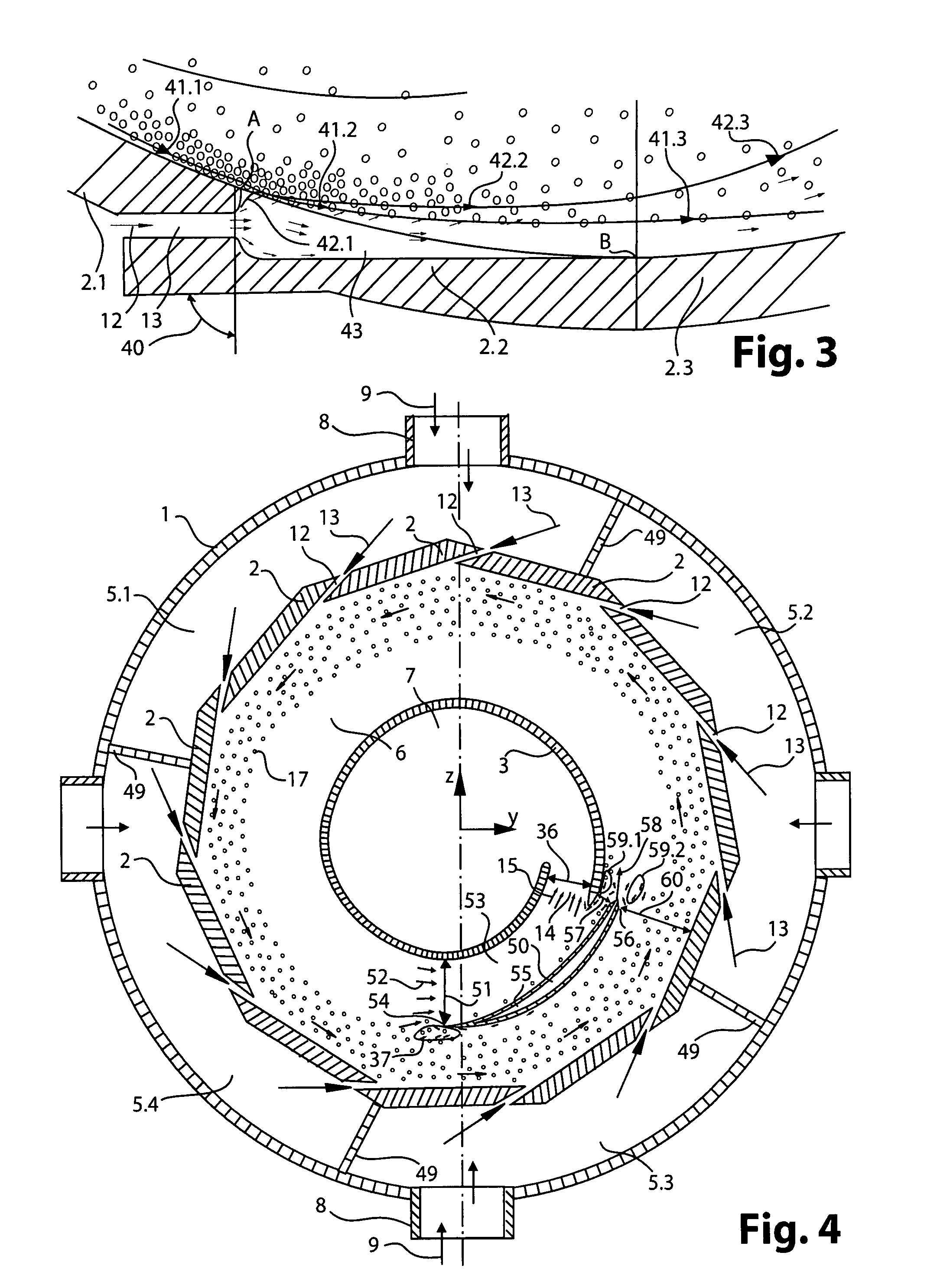Rotary fluidized bed device and method for using said device
a fluidized bed and rotating technology, applied in the direction of drying, lighting and heating equipment, mixers, etc., can solve the problems of fluids becoming very bulky, reducing rotational velocity, and limiting the ability to transfer a significant momentum to solid particles, etc., to achieve good separation, high centrifugal force, and high heat transfer capacity
- Summary
- Abstract
- Description
- Claims
- Application Information
AI Technical Summary
Benefits of technology
Problems solved by technology
Method used
Image
Examples
example 1
Conversion of Cracking Gasolines to Light Olefins Using a Device According to the Invention
[0273]The cylindrical reaction chamber shown in FIG. 8 may, for information, have a diameter of 1 m, a length of 4.5 m and an average thickness (width) of 0.23 m, giving it a volume of about 2.5 m2. The fluid (100), consisting of cracking gasolines preheated to high temperature, having a density of about 5 kg / m3, at the injection temperature and pressure, is injected at high velocity (for example 200 to 300 m / s, giving a potential pressure of 100 to 200 000 Pa) into the ejector (105) to be superheated to the desired temperature (over 600° C.), at the same time as the recycled fluid it entrains into the furnace (102) and then into the reaction chamber, where they are injected, for example, at a velocity of 60 m / s through 17 injection slits 0.005 m thick, giving a flow rate of about 23 m3 / s, or 400 tonnes per hour. (This high flow rate requires a central duct passing through the reaction chamber...
example 2
Drying of Agricultural Grains Using a Device According to the Invention
[0275]Grains of agricultural origin can be dried according to the diagram in FIG. 9. The reaction chamber or drying chamber may have the same dimensions as those of the above example. In this case, the fresh air (112) is introduced via the tube (8.1), optionally through a moisture condenser (113), to pass through the end of the reaction chamber on the side of the grain outlet (19) in order to heat them while cooling them and completing their drying. This air (11.1) is then sucked out by the centrifugal compressor or fan (108.1) through the line (10.1) and recycled to the reactor via the line (8.2) after having been heated additionally in the heater (102). After having been recycled several times, this air (11.2) is sucked out by the centrifugal compressor or fan (108.2) through the line (10.2) and recycled to the reactor via the line (8.3) after having been heated by the heater (102). After having again been recy...
example 3
Gas Phase Copolymerization of Ethylene and Octene Using a Device According to the Invention
[0279]The gas phase copolymerization of ethylene and octene is only possible if the pressure in the reactor is low, at a maximum no more than a few times the atmospheric pressure, because the octene partial pressure is limited to about 0.2 bar at 70° C. At these pressures, the quantity of heat produced by these highly exothermic reactions can only be removed by using relatively inactive catalysts or by diluting the mixture of active gases with an inactive gas to slow down the reaction rate, thereby increasing, the cost of the installation, or by passing such a large quantity of gas through the fluidized bed as to require a rotating fluidized bed, for example according to the diagram shown in FIG. 10.
[0280]The octene can be sprayed in fine droplets (120) into the reaction chamber by the tube (121) passing through the central duct and / or can be fed in gaseous form at the same time as the fresh e...
PUM
 Login to View More
Login to View More Abstract
Description
Claims
Application Information
 Login to View More
Login to View More - R&D
- Intellectual Property
- Life Sciences
- Materials
- Tech Scout
- Unparalleled Data Quality
- Higher Quality Content
- 60% Fewer Hallucinations
Browse by: Latest US Patents, China's latest patents, Technical Efficacy Thesaurus, Application Domain, Technology Topic, Popular Technical Reports.
© 2025 PatSnap. All rights reserved.Legal|Privacy policy|Modern Slavery Act Transparency Statement|Sitemap|About US| Contact US: help@patsnap.com



